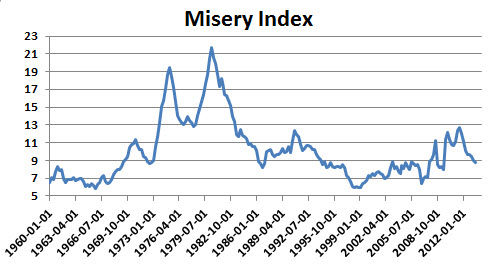Contrary to the claim that it does, the Forex Misery Index does NOT measure misfortunes of traders in the foreign exchange market. Since it identifies unemployment and inflation rates, it’s not difficult to figure out how the rumor originated. However, all it does is point out the truth. If an economy is in good condition, it won’t reveal negative information. Conversely, if an economy isn’t doing well, expecting positive results is unrealistic.
Here’s a list containing 5 things that are not true about the Misery Index:
- It does NOT contribute to the unhappiness associated with unemployment rates. According to results of large-scale surveys in the early 2000s with a European and American demographic, many people suggested that the figures in the Misery Index are indirectly related to worsening economic conditions with regard to unemployment. However, the fact is, the unemployment rates in the index are rates: they’re simply figures that describe economic conditions. They’re not to be blamed. If people initiate action, these rates can be manipulated as desired.
- It is NOT the same as corporate amalgamation and the Stagflation Index. Unlike the two groups of terminologies, it is not a type of political sabotage. As opposed to the theories of political economists, Shimshon Bichler and Jonathan Nitzan, among others, it is not a strategically laid out index that can bring in inspiration for acquisition opportunities and mergers.
- It was NOT created by the American classical macroeconomist, Robert Barro. Although a Barro Misery Index (with a similar concept) was introduced in 1999, which was featured in Business Week, the original creator of the Misery Index was American economic adviser, Arthur Melvin Okun.
- Its components do NOT drive crime rate to an upward direction. In spite of the fact that data gathered from the 1960s to 2005 imply a strong correlation between the index and more than four decades of crime rates, the figures are said to be simply a result of the statistical property, co-integration.
- Its mention in a formal debate was NOT responsible for sweeping Jimmy Carter, the 39th president of the United States, from office. Although there are discussions bordering on the Fundamentalist politician’s inapt reference to the terminologies when challenging a competitor during his presidency in the late 1970s, stepping down from his position was Americans’ decision.
Moreover, what made Jimmy Carter leave his post was his failure to keep his promises to Americans, alongside increasing interest rates and high inflation. When the Democratic Party re-nominated him to be president, he easily lost to Republican Party’s Ronald Reagan.
References: Some of the information have been taken from http://www.mtrading.in and http://en.wikipedia.org/wiki/Misery_index_%28economics%29
